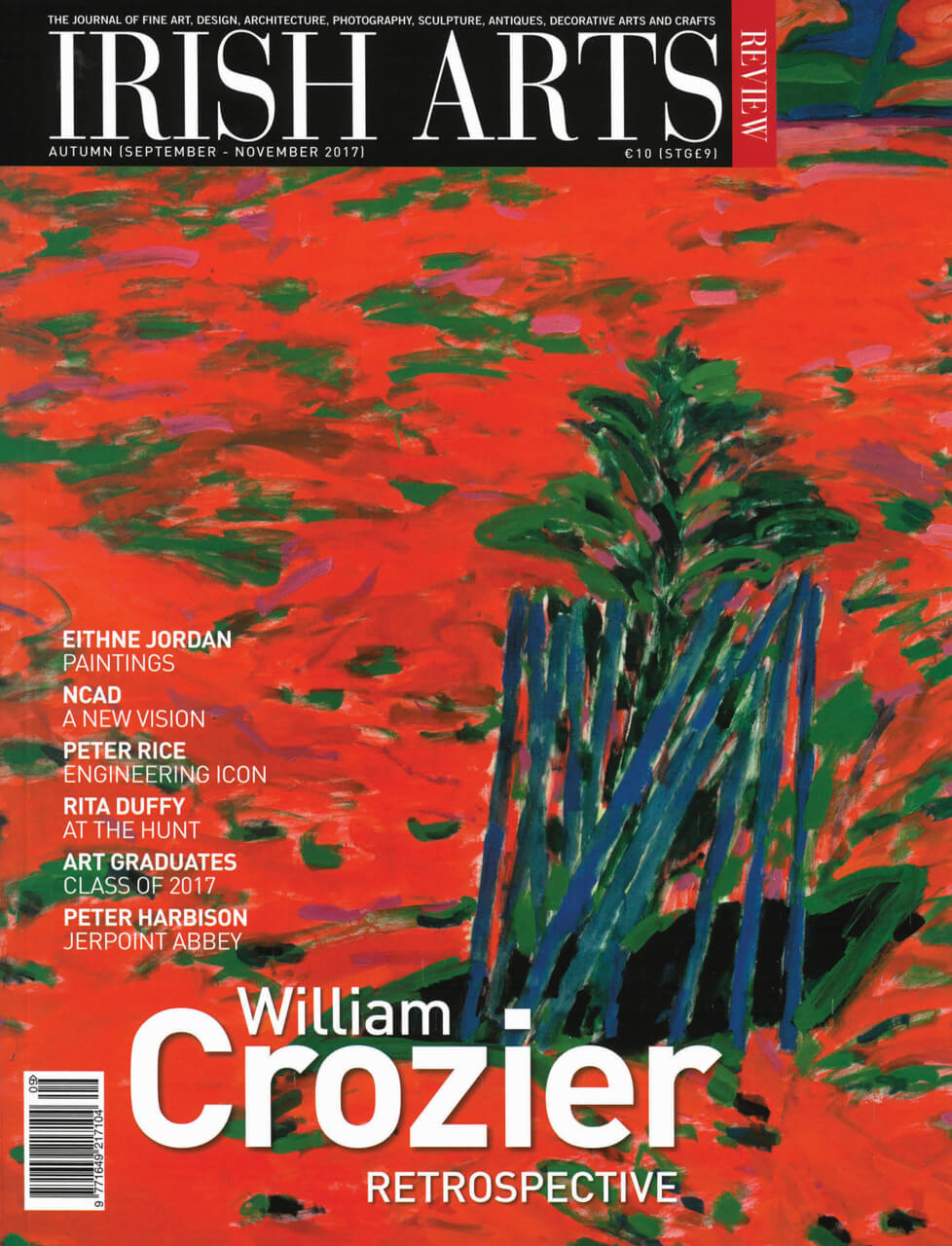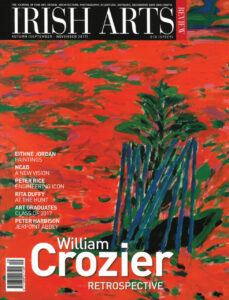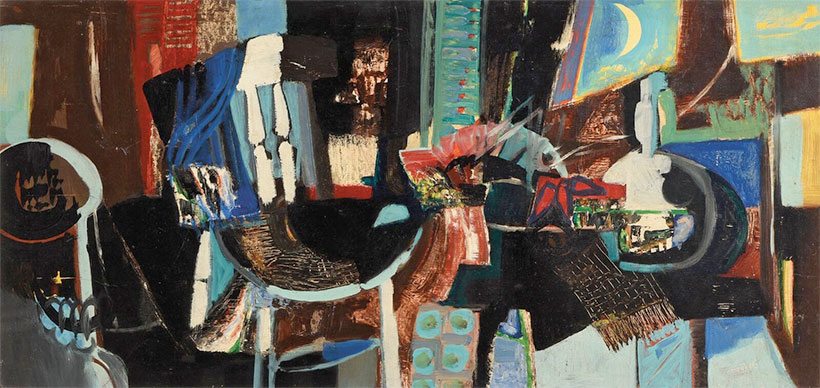

The magic realism of Sweeney’s transformation from man to bird continues Gabhann Dunne’s association with the natural world, writes Susan Campbell
Gabhann Dunne’s forthcoming exhibition, ‘In the Presence of Birds’ at the Molesworth Gallery, will manifest an encounter between the concrete stuff of paint and the boundless landscape of narrative and the imagination. A mid-summer studio visit takes place in the presence of birds; a flurry of gulls whose cries fill the air and a chick perched outside on a ledge. But the title, it emerges, is inspired by the middle-Irish tale Buile Suibhne (The Frenzy of Sweeney), which Dunne is using as a ‘very mild structure’ to inform and connect the works. It tells a story ancillary to the 7th-century battle of Magh Rath, in which the warrior Sweeney attacked the cleric Ronan as he marked out territory for a monastery, flinging his psalter into a lake. Ronan responded with a curse condemning his assailant to live as a bird, roaming from tree to tree until his life is taken by the point of a spear. Dispossessed and overcome, Sweeney falls into a frenzy, which earns him the moniker Suibhne Geilt (Mad Sweeney).
For Dunne, who describes himself as ‘always about stories’, this tale presents an opportunity to further the connection his practice has forged with the natural world. Struck by the powerful sense of place conjured up by its descriptions of flora and fauna, he has responded with paintings based on his own understanding of ‘place’ as profoundly defined by its ecosystem. Dunne’s engagement with Buile Suibhne draws on the magic realism of Sweeney’s transformation to generate a roving network of connections informed by his ‘junk-yard mind’. The works weave through time and space to create a world in which themes from the past become linked with the contemporary. The final selection will be made during the gallery hang, but its shape can be anticipated from the completed pieces, whose partially veiled forms emerge from layered backgrounds of blues, greens, greys and violets.
The works weave through time and space to create a world in which themes from the past become linked with the contemporary
These vibrate with dynamic accents, Dunne striving for beauty that will invite people in and allow ‘a passageway through the sorrow that’s inherent in things.’ His method involves a deft commitment of medium to surface, with marks drawn directly from the ‘painting muscle’ he cultivates through constant working. The supports are boards of various sizes, speedily coated in transparent wash that retains the brushstroke and draws the eye in, lending glimpses of depth and teasing texture and colour notes. Here and there, glazing is applied to highlight passages of paint, as in I Rode Him Lightly, an action scene in which Sweeney-as-bird sits astride a galloping deer (Fig 4).
While ancient tales can be dismissed as irrelevant, Dunne wants to say, ‘This is us now. This always is us now.’ He supports this argument with small, imagined portraits of figures, past and present, who have struggled to inhabit their form or place. From King Nebuchadnezzar, who was forced to live like an animal and, like Sweeney, lost his sanity, to the 14th-century mystic Marjorie Kempe and Arthurian novelist T H White. Most moving, perhaps, is a larger work, The Sad and Affecting Death of Marsha Mehran, a painted response to the lonely demise, in Lecanvey, near Croagh Patrick, of a young and celebrated Iranian-born author (Fig 5). For those familiar with her story, the title itself is affecting, a sense compounded by the depiction of its subject floating through the blue air towards Mayo’s sacred mountain. This visual storytelling connects an ill-fated migrant with the movement of birds, and the displaced Suibhne Geilt. Says Dunne, ‘She had what we consider success and what she wanted was place.’ Other works feature animals, drawn from Suibhne Buile, that are, or were, important within Ireland. They include a slightly absurd image of an otter with Ronan’s psalter on his head (Fig 2), Sweeney as The Milk Owl, his gaze, ‘between human and animal’, turned toward the viewer, and The Quiet Wolf of Gleann na Ngealt, in which the eponymous creature is held aloft by a bird.
The Molesworth Gallery exhibition will broaden the reach of a conversation facilitated by a process of painting and editing, and the works that make it will be included ‘because they communicate something. You want people to hum with the paintings, to connect with them,’ Dunne stresses. ‘That’s really important. They know there is a story, but if a painting fails that piece of the story is left out.’
Gabhann Dunne ‘In the Presence of Birds’ Molesworth Gallery, Dublin 5-27 October 2017.
Susan Campbell is a 3rd year PhD candidate in the Department of History of Art and Architecture at Trinity College Dublin.
The Guardians of the Irish Arts Review support the New Generation Project at the Irish Arts Review. The objective of the New Generation Project is to nurture, support and promote emerging writers, artists and architects.



